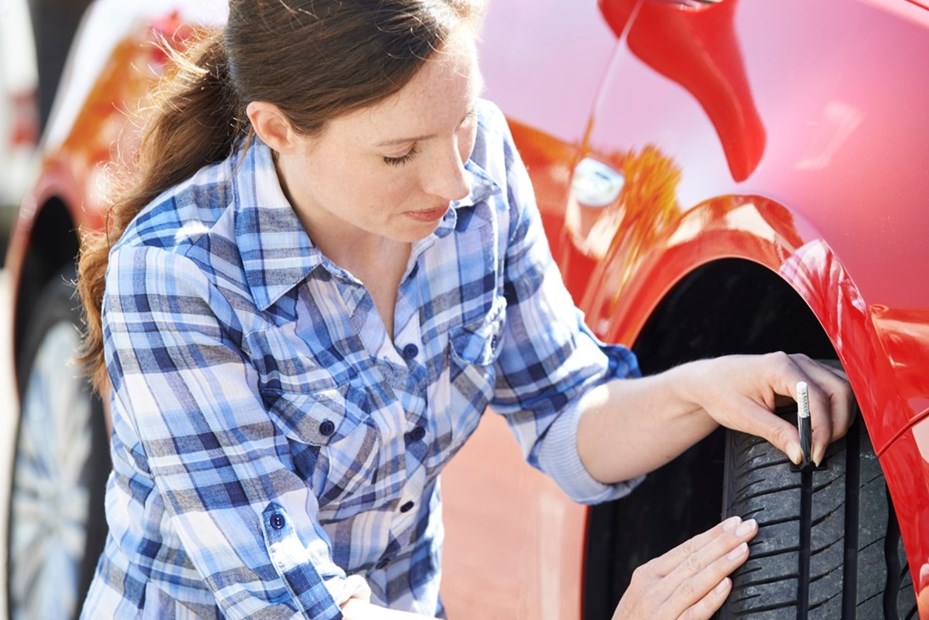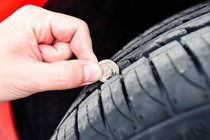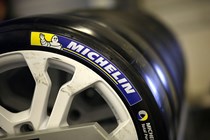It’s easy to forget about the need to occasionally do a bit of tyre checking – your car’s tyres are basically out of sight, after all. But, like any other car component, they do need checking over periodically to make sure they’re safe to be used. Tyres are the only parts of a car that’s actually in contact with the road and they’re crucial to a car’s handling and safety.
In this guide, we’re going to explain how to check your car’s tyres, what to look out for and how you can tell if it’s time to replace them.
How to check tyre pressures
If the tyres aren’t up to the correct pressure, your car won’t handle as it should, it’ll be less fuel efficient, and the tyres will wear out more quickly. You’ll be able to see if the pressure is really low because the tyre’s sidewall will bulge out under the car’s weight. Otherwise, you can use a tyre pressure gauge to check if it’s holding the correct PSI.
If the tyre’s pressure is too low, you don’t have to visit a fuel station to use its air line. There are loads of affordable air compressors you can use at home.
Checking a tyre’s pressure regularly can also help you tell if there’s a problem with it. If the pressure is dropping significantly over a week or two the tyre might have a puncture or may not be sealing against the wheel properly, so it’d be wise to get the problem checked out.
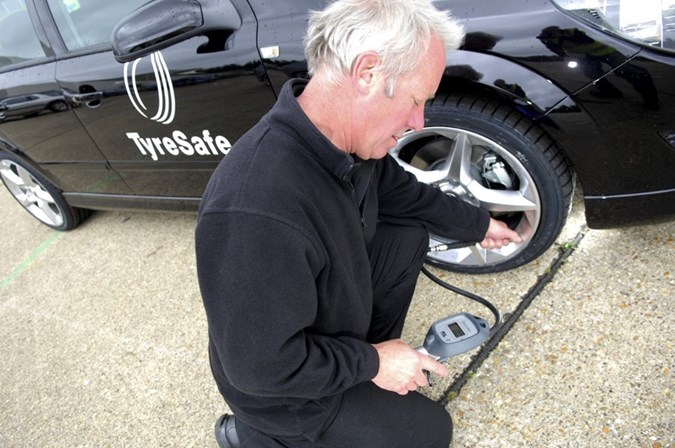
How to check tread depth
The legal minimum tread depth required on a tyre is 1.6mm – that’s on all parts of the tyre. You can check the tread depth on your car’s tyres with a 20p coin. The raised outer edge of the coin is 2.7mm across so, if it disappears, there’s sufficient tread left. If you want a more accurate reading, you can buy a tread depth gauge.
It’s important to check the tread depth across the width of the tyre, and around as much of its circumference as possible. If some parts of the tyre have significantly less tread, particularly the outer edges, it could indicate there’s a problem with the car. For instance, the tracking could be out – meaning the wheels aren’t pointing in the right direction – or a suspension component may not be functioning properly.
Tyres are unlikely to have the same tread depth front-to-rear. That’s because the tyres on a car’s driven wheels wear quicker. However, the tread should be the same depth side-to-side at each end.

How to check a tyre’s general condition
Have a look and a feel around each tyre for any damage. Things like cuts, bulges, cracks, missing chunks of rubber or sharp objects sticking into them – stones, thorns, screws, etc. Find any damage and you should get the tyre replaced as soon as possible. If the damage goes right through the rubber and exposes the grey-white ‘canvas’ underneath, you need to get a new tyre immediately.
Some forms of damage can point to other issues. Bulges usually form when a tyre overheats, which happens when pressure is too low. Cracks indicate that the tyre is too old. And a rough inner edge can be caused by straddling speed cushions when you drive over them.
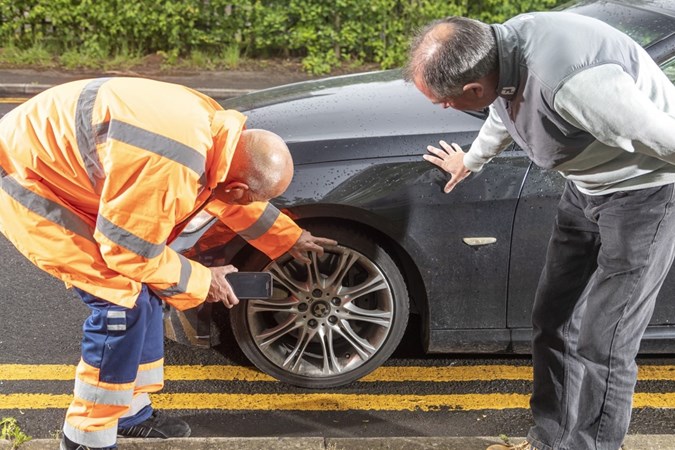
How to check a tyre’s date code
Every tyre has a date code. You’ll find it somewhere on the lower edge of the sidewall, adjacent to the wheel. The code is a four-digit number – 2623, for example – that shows when the tyre was made. The first two digits are the week, the last two digits are the year. In our example, the tyre was made in week 26 of 2023.
Tyre rubber hardens as it ages, losing its ability to provide the grip you need to drive safely. Most experts suggest you should replace tyres when they reach eight years old, regardless of how much tread is left on them.
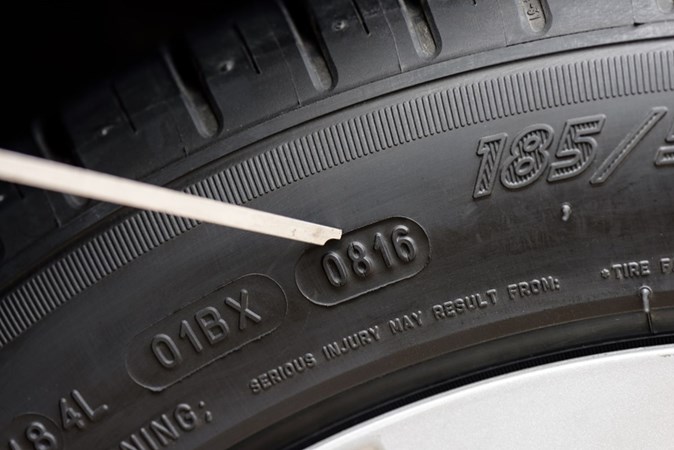
Check your tyres match
There are dozens of manufacturers producing tyres in myriad different sizes. It’s vital your car’s tyres are the correct size; if not, it won’t handle properly to the point safety may be impacted. A tyre’s size is embossed on the sidewall in this format: 205/45 R17 91W. You can check in your car’s handbook or online for what size tyres it should have and check the tyre itself to make sure they’re the right ones.
Tyre sizes don’t always match front-to-rear, especially on rear-wheel-drive cars. However, the tyres should be the same size side-to-side at each end.
You should also check whether your car’s tyres are the same make and model at each corner. It’s quite common for a car to have a mix of different brands and it’s usually perfectly safe. However, handling can be affected if some tyres are significantly lower quality than others. A car’s handling will be more consistent if all four tyres are the same make and model.

How often should I check my car’s tyres?
There’s no hard and fast rule for how often you should do tyre checking. Ideally, though, you should give them a check over at least once a month. And you need to look at them before a long journey, especially if the car will be heavily laden with people and stuff – tyres need pumping up to a higher pressure to compensate for heavy loads.
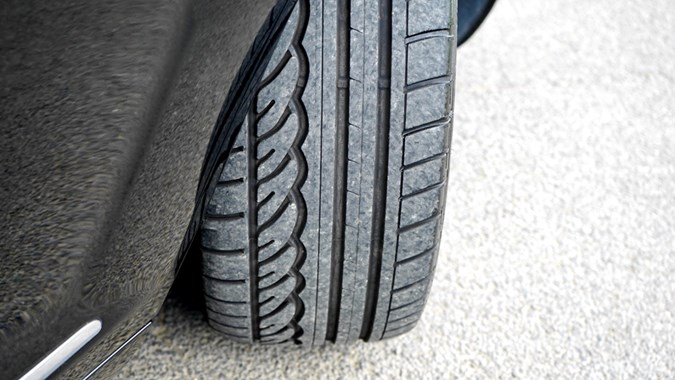
Are tyres checked in an MoT test?
Yes, they are. During an MoT, the tester will do all the checks we’ve described here, plus others, to make sure a car’s tyres are safe to be used on the road. Indeed, damaged and worn-out tyres are one of the most causes of MoT failure.
If the MoT station doesn’t supply tyres itself, you may be allowed to drive to a nearby retailer to have new ones fitted.
What’s the penalty for driving with dangerous tyres?
If the police stop you and discover your car’s tyres are in a dangerous condition, you can be fined and have points added to your license. The maximum fine is £2,500 and you’ll receive three points on your license. That’s £2,500 and three points per tyre. If all four tyres are dangerous, that’s a £10,000 fine plus 12 points, which will result in being banned from driving.
Remember – When checking the tread, pressures and condition, don’t forget the spare!

Do I need different tyres for winter?
Winter tyres can make a real difference when temperatures drop, staying flexible in the cold to give you better grip on snow, ice, and wet roads. For the full rundown on winter tyres and whether they’re worth it for you, check out our in-depth guide. But in a nutshell, they’re designed to boost safety and give you better traction control in winter conditions. Whether you need them depends on where you live and how harsh your winters get—if you regularly face icy or snowy conditions, they’re worth considering.
Just so you know, we may receive a commission or other compensation from the links on this website - read why you should trust us.


